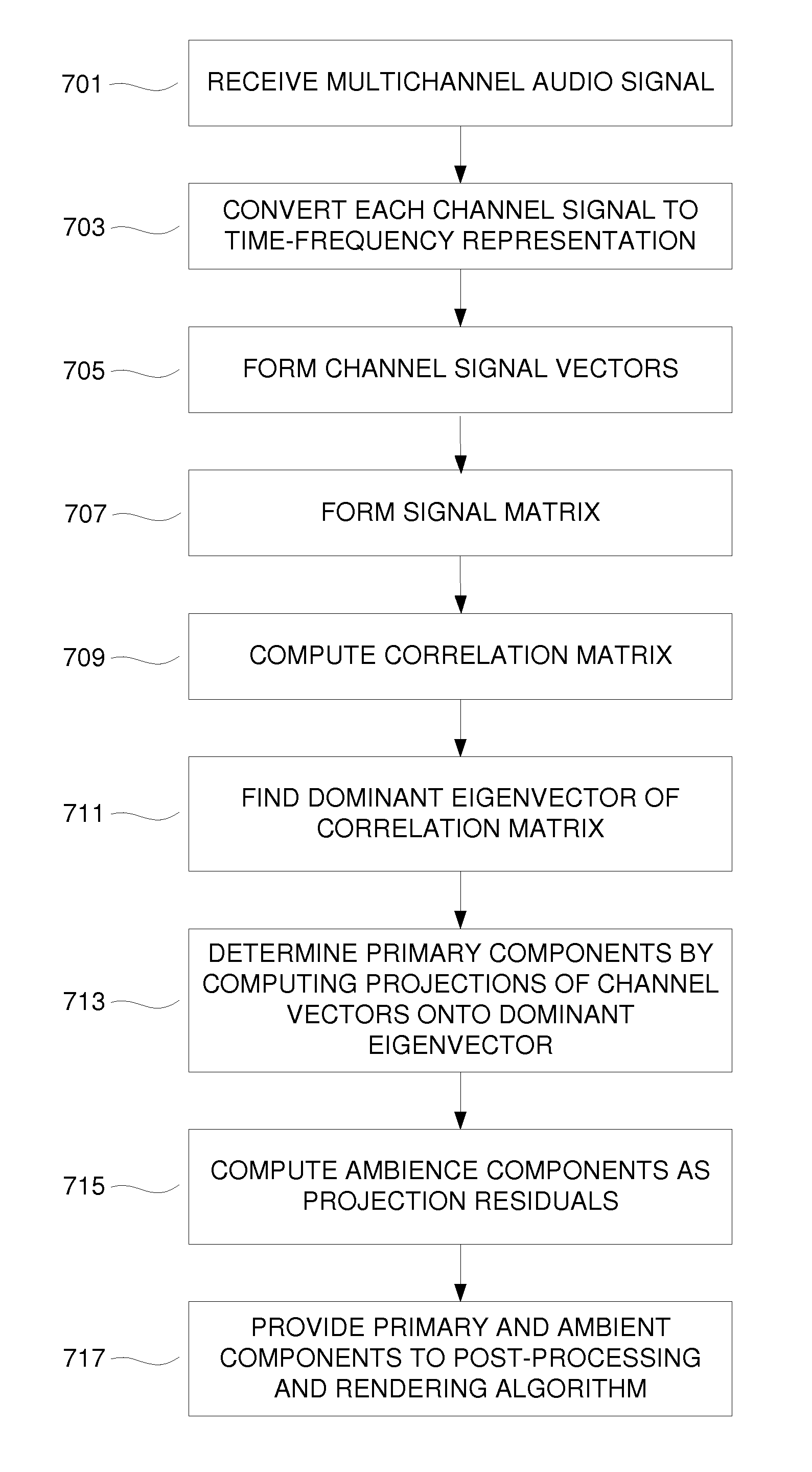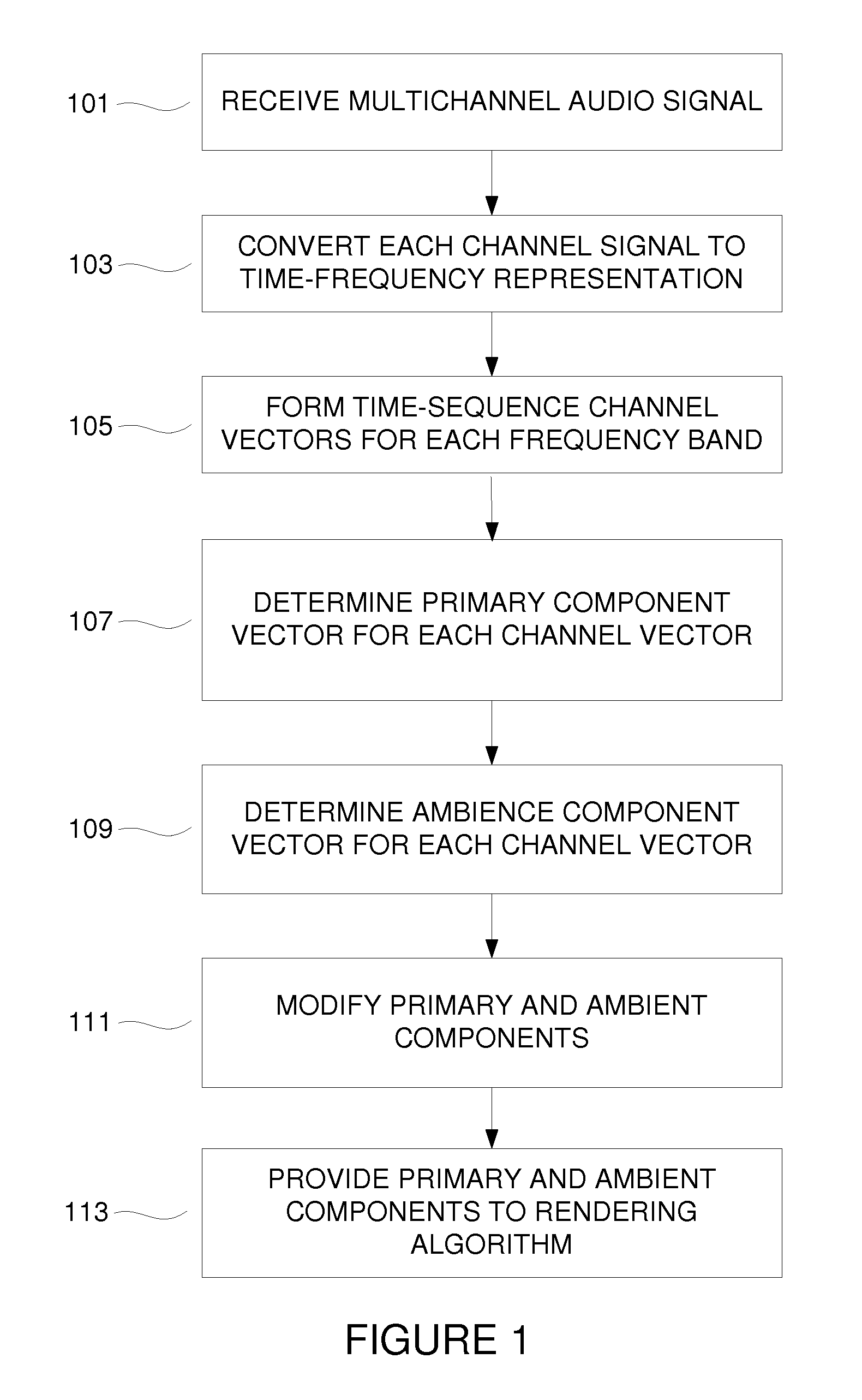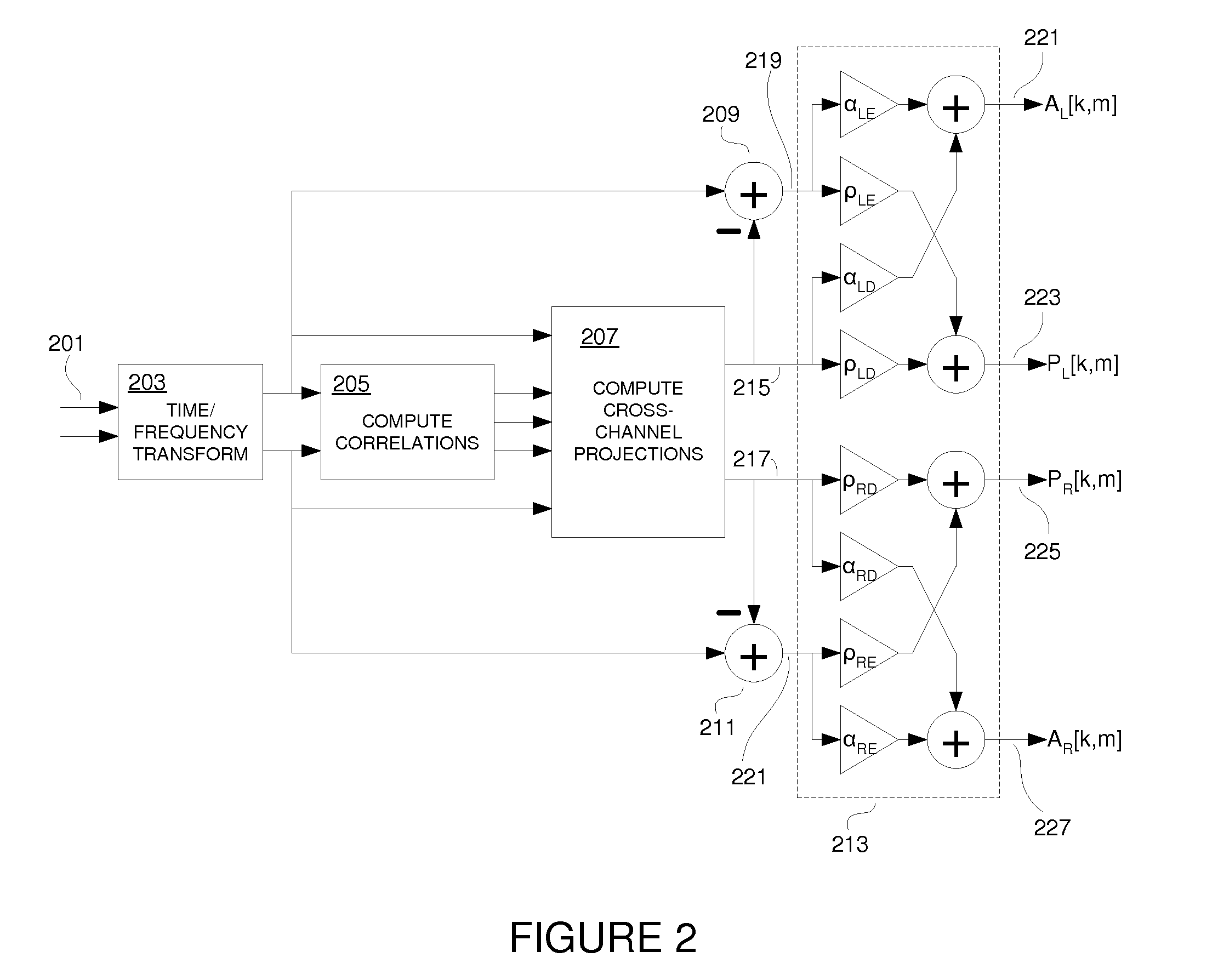Vector-space methods for primary-ambient decomposition of stereo audio signals
a stereo audio and decomposition method technology, applied in the field of audio signal processing techniques, can solve problems such as artifacts in audio reproduction, and achieve the effect of minimizing the total energy of the modified ambience components
- Summary
- Abstract
- Description
- Claims
- Application Information
AI Technical Summary
Benefits of technology
Problems solved by technology
Method used
Image
Examples
fifth embodiment
[0036]The vector-space methods in the first four embodiments involve cross-channel projection. The vector-space methods in the fifth embodiment involve determination of a principal direction vector and projection onto that vector. In these various embodiments, the channel signals are decomposed into primary and ambient components in order to satisfy selected signal-space orthogonality constraints and conditions; for the purpose of this invention, the terms “signal-space” and “vector-space” can be taken as interchangeable in that the signals in question are treated as vectors.
first embodiment
[0037]The primary-ambient decomposition is based on selecting signal-space axes for the primary and ambient components based on various orthogonality constraints. Generally, a primary axis is first selected for each channel and we then project the vector corresponding to each channel onto the established axis. In several embodiments, the ambience is computed as the residual of this projection; the ambience axis for a given channel's decomposition is then orthogonal to the primary axis. In different embodiments, the method used to establish the axes for the unit vectors produce different results. For example, in a first embodiment incorporating cross-channel projection, orthogonal decomposition is used. The first channel is projected onto the opposite second channel. As a result, the first (left) channel is decomposed into a primary signal (PL) and an orthogonal ambient left signal (AL). That is, the left channel signal is the vector sum of the primary left (PL) and ambient left (AL)...
second embodiment
[0038]In accordance with a second embodiment incorporating cross-channel projection, scaling is performed on the ambience with equal gains (attenuation) in each channel. The primary components in both channels are correspondingly modified such that the primary-ambient sum still equals the original signal. The ambience gains are selected so as to yield a new primary-ambient decomposition wherein the primary components are collinear in signal space.
PUM
 Login to View More
Login to View More Abstract
Description
Claims
Application Information
 Login to View More
Login to View More - R&D
- Intellectual Property
- Life Sciences
- Materials
- Tech Scout
- Unparalleled Data Quality
- Higher Quality Content
- 60% Fewer Hallucinations
Browse by: Latest US Patents, China's latest patents, Technical Efficacy Thesaurus, Application Domain, Technology Topic, Popular Technical Reports.
© 2025 PatSnap. All rights reserved.Legal|Privacy policy|Modern Slavery Act Transparency Statement|Sitemap|About US| Contact US: help@patsnap.com



